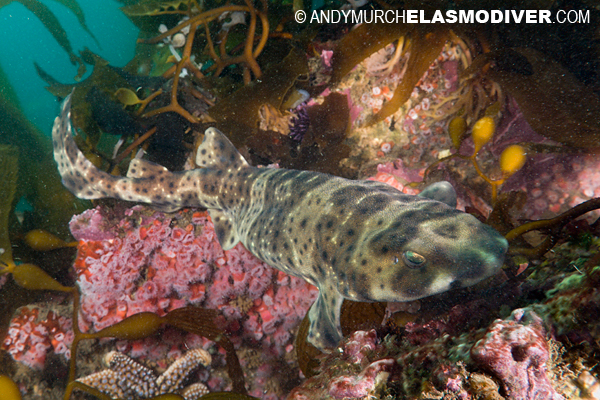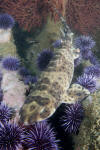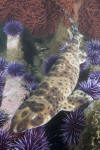|
|
|
SHARK INFO |
|
SHARK |
|
SHARK EVOLUTION |
|
|
|
SHARK DIVING |
|
SHARK DIVING 101 |
|
|
|
CONSERVATION |
|
|
|
PHOTOGRAPHY |
|
SHARK PHOTO TIPS |
|
|
|
RESOURCES |
|
|
|
WEB STUFF |
|
WHAT IS ELASMODIVER? Not just a huge collection of Shark Pictures: Elasmodiver.com contains images of sharks, skates, rays, and a few chimaera's from around the world. Elasmodiver began as a simple web based shark field guide to help divers find the best places to encounter the different species of sharks and rays that live in shallow water but it has slowly evolved into a much larger project containing information on all aspects of shark diving and shark photography. There are now more than 10,000 shark pictures and sections on shark evolution, biology, and conservation. There is a large library of reviewed shark books, a constantly updated shark taxonomy page, a monster list of shark links, and deeper in the site there are numerous articles and stories about shark encounters. Elasmodiver is now so difficult to check for updates, that new information and pictures are listed on an Elasmodiver Updates Page that can be accessed here:
|
|
_ |
| The Swell Shark's Last Stand - Story and Images | ||||||||||
|
First published in Shark Diver Magazine - issue 17 spring 2008
The Swell Shark's Last Stand This summer, I made the long pilgrimage to Southern California to photograph Shortfin Mako Sharks. A week at sea passed blissfully in the company of the fastest fish in the world. Midnight blue streaks appeared from nowhere, tore scraps of fish from the bait line, posed briefly in front of the camera, and left as quickly as they came. I simply hung in the water and documented what I could. Many Makos later, I had a hard drive filled with images and a burning desire to shoot some new sharks. I drove north past the red triangle: that notorious stretch of California coastline where surfers occasionally fall prey to white sharks. Dismissing the idea of chumming for Great Whites, I continued past Ventura and an hour later I pulled off the road at Refugio Beach north of Santa Barbara with a scuba tank, my trusty Nikon, and a vague idea of where to find California Swell Sharks. I chose Refugio on the advice of my good friend Ron Clough who organizes the California Shark and Ray Count. Ron and his band of volunteers diligently document every shark and ray encounter in an effort to monitor the health of the entire ecosystem. Logically, if there are a lot of resident sharks in a particular area, this indicates that the reef is healthy, containing an abundant food supply that can support many apex predators. If there are only a few shark sightings or none at all, the reef may be in trouble. I had inadvertently picked a great day to attempt a beach entry. The rollers were less than a meter high and the sets were far enough apart for me to get well into waist deep water before the first big wave tried to rip my camera from my grasp. Kicking hard, I made it past the surf zone and swam out to the edge of the kelp forest about 100 meters from shore. Being part of the Jaws generation, surface swimming in temperate water gives me an uneasy feeling. However, the prospect of missing the shot because I had squandered my tank gas on a needless underwater swim was more of a concern to me than a shark attack so I gingerly soldiered on. I descended once I hit the kelp line about 100 yards offshore. Swimming through a thick web of kelp fronds is almost impossible but in the shadowy world below the canopy, the endless branches braid together into well defined trunks, between which, there is enough room to swim unimpeded. At the base of each ‘kelp tree’ a fibrous root called a holdfast anchors the entire organism to the rocky seabed. I sank down among these structures, and began my search. The relentless wave action at Refugio has sculpted the soft rock into a series of enormous overhanging shelves. The sharks (if present) would be resting under these dark cornices, so I wandered through the forest looking for the right overhang. I became absorbed with the colourful urchins and carpets of strawberry anemones that clung to every available surface. As I swam deeper into the kelp I abandoned any futile attempt to keep track of my position and simply drifted along, waiting for a swell shark to show up under the next ledge, or the next, or the next. It took about twenty minutes for me to spot the first swell shark aka Cephaloscyllium ventriosum. It was a young female buried so deep inside its hiding place that it was almost invisible. I would have missed it completely if my flashlight had not lit up its golden hued eyes. I thought about giving it a gentle nudge but I did not think that I could coax it out of such a narrow crack without doing it harm so I moved on to look for a less camera shy animal. The second swell shark that I found was resting rather precariously upon a group of purple sea urchins. Unlike most sharks that I have encountered it made no attempt to flee. It sat there like a swami on a bed of nails and stared at me defiantly. It was not until I repeatedly flashed it with my camera strobes that it finally darted over a ledge and disappeared into the kelp. Thinking that this might be my only chance for an interview with this particular species, I followed it at a leisurely pace, waiting for it to settle somewhere. To my delight, it did a quick 180 and stalled next to a bed of strawberry anemones. I rattled off a fusillade of quick shots and then lowered my camera to absorb as much about this shark as I could. Its body was soft and flabby looking which makes sense for a shark that can suck water into its stomach and swell to twice its size. I have read that it does this in order to firmly lodge itself into its hole when harassed by a predator. It probably also uses this faculty to hold itself in place when the surge is at its most violent. Its teeth form a line of tiny indistinct burrs reminiscent of Velcro. Although they posed no threat to me, they are no doubt perfect for their intended work of holding onto small fish and crushing mollusks and crustaceans. While I studied the chocolate coloured saddles on its back, bordered by tiny pale dots, I mentally thanked Ron for guiding me to this particular spot. Two decades ago, California Swell Sharks were relatively common along the So-Cal coastline but their numbers have dwindled alarmingly and chance encounters by divers are now quite rare. Unnerved by my close scrutiny, the swell shark glided into a nearby fissure. Fair enough I thought and I swam back to the beach hoping that this little pocket of kelp would not become known as the California Swell Shark’s last stand. .
For further information on the California Swell Shark including a species i.d. guide, distribution, behavior and info on diving with swell sharks in the wild please visit the California Swell Shark Information Page.
RETURN TO SHARK STORIES MAIN PAGE ELASMODIVER HOME
|





























